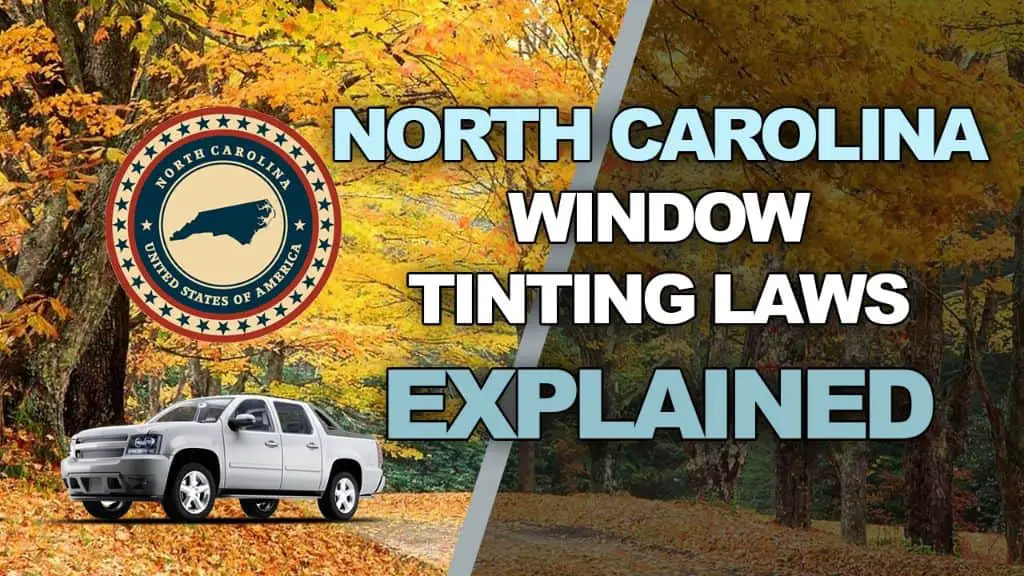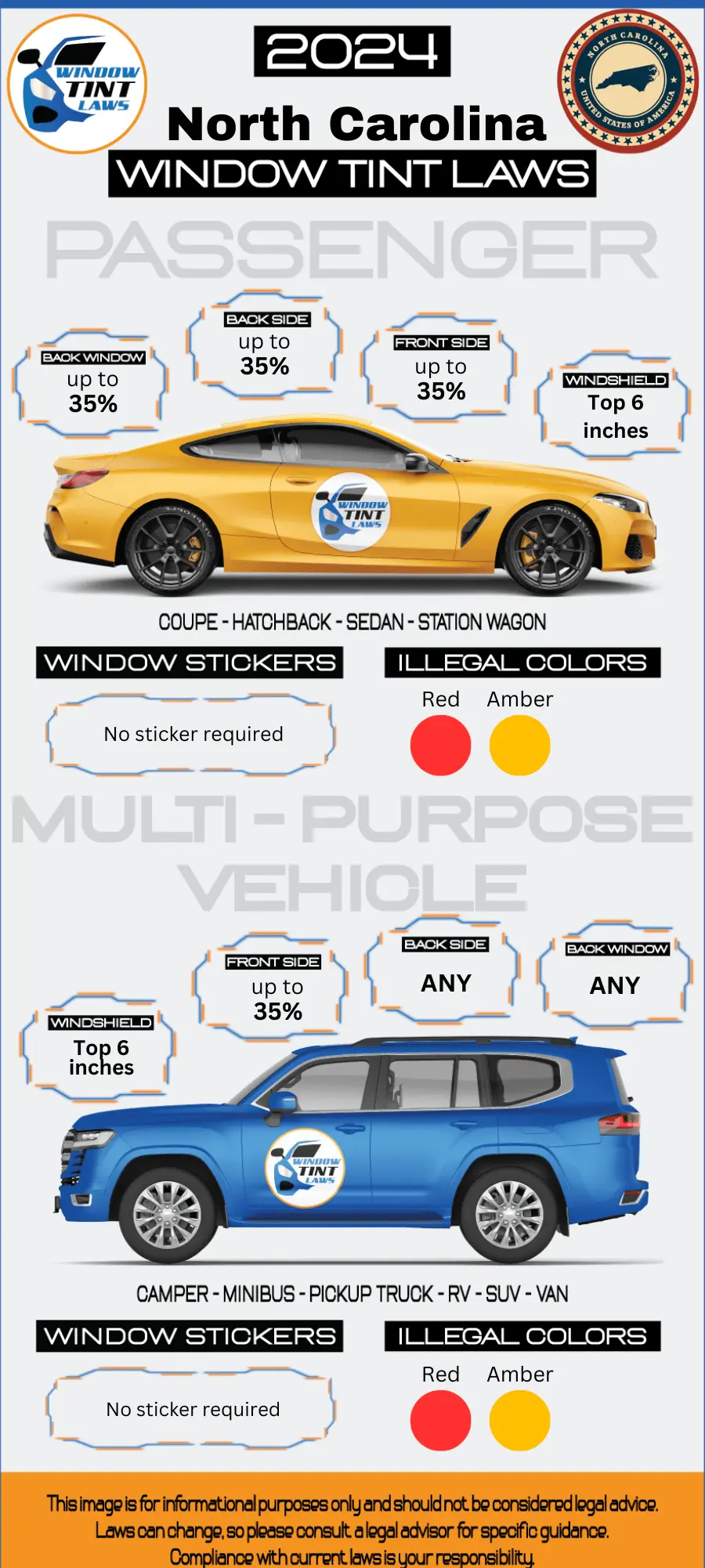

Article Created by Ryan Pietrzak
Last updated on February 14, 2024North Carolina Tint Laws – 2024 Updated Legal Tint Limit
Please note that North Carolina Tint Laws Regulation can change daily and may be interpreted differently at the city or county level. We recommend verifying this information with your local DMV or law enforcement agencies. We have manually fact-checked this content using official state resources. North Carolina enacted tinting laws in 2001. If any information provided is incorrect or outdated, please contact us so we can make the necessary corrections. Thank you.
2024 North Carolina Tint Laws – Legal Tint Limit For Passenger Vehicles.
- Front Windshield: Non-reflective tint is allowed on the top 6 inches of the windshield.
- Front seat side windows: up to 35% tint darkness allowed Front side windows must allow at least 35% light transmission, restricting tint to 32% or lighter.
- Back seat side windows: up to 35% tint darkness allowed
- Rear window: up to 35% tint darkness allowed
2024 North Carolina Tint Laws – Legal Tint Limit For Multi-Purpose Vehicles
- Front Windshield: Non-reflective tint is allowed on the top 6 inches of the windshield.
- Front seat side windows: up to 35% tint darkness allowed
- Back seat side windows: Any tint darkness can be used
- Rear window: Any tint darkness can be used

- Medical exemptions: North Carolina tint laws permit darker tints on front side windows with a doctor’s note
- North Carolina tint laws prohibit metallic or reflective tint on any of the windows
- North Carolina tint laws are statewide with no additional local regulations
- Violating North Carolina tint laws restrictions can result in a $50 fine for a first offense.
What does VLT Mean according to North Carolina Tint Laws?
- Window tint film’s light transmission is measured as VLT (Visible Light Transmission) and each state has its own legal limits for VLT on car windows.
- A HIGHER VLT means that more light is allowed to pass through the window tint film.
- Example: a 75% tint will allow 75% of the light to pass through whereas a 5% tint will only allow 5% of the light to pass through, making the 5% tint a much darker film.
- North Carolina window tint laws has specific VLT limits for Passenger Vehicles and Multi-Purpose Vehicles.
FAQ’s Regarding North Carolina Tint Laws and North Carolina Legal Tint Limit
What is the darkest legal tint in North Carolina?
In North Carolina, the darkest legal tint for vehicle windows is 32 percent as measured by a North Carolina-approved window tint meter. This applies to all windows of the vehicle. The windshield tint is also regulated, where the tint cannot extend more than 6 inches below the top of the windshield or below the AS1 line of the windshield, whichever is longer.
Are police exempt from window tint laws in North Carolina?
In North Carolina, law enforcement vehicles are among the exceptions to the state’s window tint laws. This means that police vehicles can have window tints that are darker than what is legally allowed for civilian vehicles. These exemptions typically exist for operational reasons related to law enforcement activities
How do I get a tint waiver in North Carolina?
To obtain a window tint waiver in North Carolina, individuals with photosensitivity to light or similar medical conditions can apply for a medical exception permit through the N.C. Division of Motor Vehicles’ Medical Review Program. The permit is valid for up to five years, and applicants may hold no more than two medical permits at the same time. The permit must be carried in the vehicle to which it applies, and a medical exception sticker must be displayed in the lower left-hand corner of the rear window. For more information, visit the NCDMV website.
How much is a tint ticket in North Carolina?
In North Carolina, a tint ticket could result in a fine of $50, plus additional court costs. These fines and costs together can total up to around $238. This penalty is enforced to ensure compliance with the state’s window tint laws.
Can you get pulled over for tint in North Carolina?
Yes, in North Carolina, you can be pulled over for having window tint that does not comply with the state’s legal tinting limits. Enforcement of window tint laws is strict in the state, and non-compliance can lead to being stopped by law enforcement and potentially fined. This ensures adherence to safety regulations related to visibility and glare reduction.
How to get a Tint Exemption in North Carolina
North Carolina allows windshield tint with 70% VLT under medical waivers. A permit can be issued by N.C. Division of Motor Vehicles Medical Review Program for 2 to 5 years. A medical exception sticker must be displayed in the lower left-hand corner of the rear window. Failure to display the sticker is punishable by a $200 fine.
For more information regarding window tint medical exemptions in _____ you can check out this resource:
- North Carolina Department of Transportation: Window tinting
- North Carolina Department of Transportation: Tinted window waiver application form (.pdf file)

Ryan Pietrzak
Creator of Windowtintlaws.us

